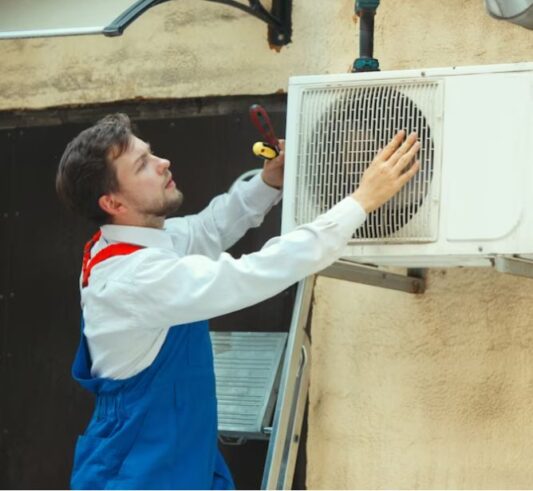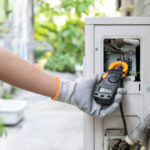
Cooling System Maintenance: Ensuring Your Engine’s Longevity and Performance
As a responsible vehicle owner, you’re undoubtedly aware of the importance of regular maintenance. However, one critical aspect that often goes overlooked is the cooling system. In this comprehensive guide, we will delve deep into the realm of cooling system maintenance, offering valuable insights, practical tips, and expert advice to keep your engine cool and trouble-free.
The Significance of Cooling System Maintenance
Before we explore the intricacies of cooling system maintenance, let’s underscore why it is vital. The cooling system is the unsung hero of your vehicle, responsible for regulating your engine’s temperature. Neglecting its upkeep can lead to a cascade of problems, including engine damage, decreased fuel efficiency, and unexpected repair bills.
A Closer Look at Cooling System Components
To effectively maintain your vehicle’s cooling system, it’s essential to understand its key components. Let’s delve into the major players:
Radiator
Picture the radiator as the heart of the cooling system. It’s the component responsible for dissipating heat from the engine coolant, ensuring it remains at an optimal operating temperature.
Water Pump
The water pump is the circulatory system of the cooling system. It continuously moves coolant through the engine and radiator, playing a pivotal role in maintaining consistent temperature levels.

Thermostat
Think of the thermostat as the gatekeeper. It regulates the flow of coolant, allowing it to enter the radiator once the engine reaches a specific temperature, ensuring efficiency.
Hoses and Belts
These unsung heroes carry the lifeblood—coolant—to and from the engine. Regularly inspect them for signs of wear and tear, as their integrity is crucial for the system’s performance.
Recognizing Signs of Cooling System Problems
Identifying cooling system issues in their early stages can save you from substantial headaches and expenses. Keep an eye out for these warning signs:
Engine Overheating
When your engine temperature gauge spikes into the red zone, it’s a clear indicator of an overheating issue. Address it promptly to prevent severe damage.
Coolant Leaks
If you spot puddles of coolant under your vehicle or notice a visible coolant leak, these are definite red flags that require immediate attention.
Unusual Engine Noises
Gurgling or hissing sounds under the hood may signal cooling system problems. These noises should not be ignored, as they could indicate underlying issues.
DIY Cooling System Maintenance
Now that we’ve grasped the basics, let’s explore essential DIY maintenance tips to keep your cooling system in prime condition:
Monitor Coolant Levels
Regularly inspect your coolant reservoir to ensure it’s at the recommended level. Top it up if necessary, using the appropriate coolant mixture specified in your owner’s manual.
Inspect Hoses and Belts
Carefully scrutinize hoses and belts for cracks, bulges, or leaks. Promptly replace any damaged components to maintain the system’s integrity.
Flushing the Cooling System
Periodic flushing of the cooling system helps eliminate built-up sediment and contaminants, keeping it clean and efficient.
Testing the Thermostat
A malfunctioning thermostat can lead to overheating. Periodically test it and replace if it fails to function correctly.
The Role of Professional Maintenance
While DIY maintenance is essential, it’s equally critical to schedule regular professional maintenance. Experienced technicians can:
Perform Pressure Tests
Professionals can conduct pressure tests to identify hidden leaks in the system, even those not visible to the naked eye.
Conduct Coolant Exchange
Professionals can perform a complete coolant exchange, ensuring the correct mixture and concentration for optimal cooling system performance.
Conclusion
In conclusion, maintaining your vehicle’s cooling system is not just an option—it’s a necessity for optimal performance and longevity. Regular DIY checks and professional maintenance can prevent costly repairs, extend your engine’s lifespan, and ensure you stay on the road trouble-free.
FAQs
How often should I flush my cooling system?
Ideally, you should flush your cooling system every two years or as recommended in your vehicle’s owner’s manual.
Can I use tap water instead of coolant?
Using tap water is not recommended, as it can contain minerals and impurities that can harm your cooling system. Always use a 50/50 mixture of coolant and distilled water.
What happens if my engine overheats?
If your engine overheats, it can lead to severe damage, including a blown head gasket or a warped cylinder head. Immediate action is required to prevent costly repairs.
Is it safe to drive with a coolant leak?
Driving with a coolant leak is not safe, as it can lead to engine overheating and damage. It’s best to have the issue repaired as soon as possible.
How can I prevent my cooling system from freezing in cold weather?
To prevent freezing, ensure that your coolant mixture contains the appropriate amount of antifreeze. This is typically a 50/50 mix of antifreeze and distilled water, but check your vehicle’s specifications for guidance.



